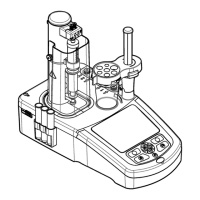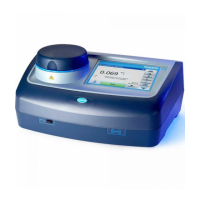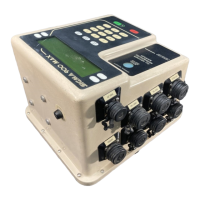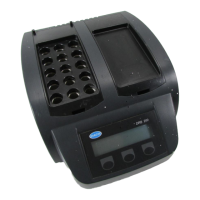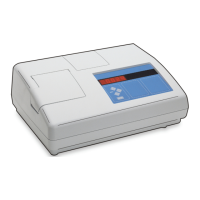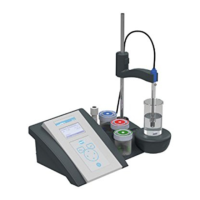Basic Operation
Basic Operation
Page 24
50081_Operation.fm
• The PRINT key sends titration and calibration analysis results to the printer.
Results can be printed either during the method procedure or later from the GLP
archives.
Note: Curve and Line Fit printer parameters can only be utilized when printing during a
method procedure—not from the GLP archives.
• The STOP key is an emergency stop and is used to interrupt the current operation
or exit an embedded method. If an analysis is interrupted, the AutoCAT 9000
will prompt the user to resume or end the analysis. All data for the analysis will
be lost if it is ended prior to completion.
the
STOP key is also used to access the Setup menu from the Methods menu
(press and hold for approximately three seconds).
3.2 AutoCAT Main Menus
Figure 2 Main Menu
3.2.1 How to Access the Menus
• Press UP or DOWN key to scroll vertically and highlight various items within
currently displayed menus. To select, highlight the desired item and press the
CHECK MARK to confirm. Selections can also be made by pressing the corresponding
number (
1 – 6, if available), to the right of the selection; this feature provides quick,
one-step access.
• Individual menus define certain keystrokes at the bottom of the display. The
horizontal scroll bar indicates the relative status of the screen(s) being displayed.
Note:Press the RIGHT or LEFT key to tab horizontally between Methods, Titrants, Electrodes,
and Cell menus.
3.2.2 Methods Menu
The Methods menu provides access to the embedded procedures, adjustable parameters,
and stored titration analyses results. Major components are explained below.
• Title bar—displays the instrument name, current time, and current "method" name,
along with the Sub-ID.
• Run method—initiates the method currently selected.
• Select method—allows selection of the method(s) for analyses.
• Display method—(available in Routine Mode) allows the user to change the
Method or Sub-ID.
Legend
Number Item Name
1 Title Bar
2 Selected Menu Item
3 Available Menu Items
4 Cell Tab
5 Electrode Tab
6 Reagents Tab
7 Methods Tab

